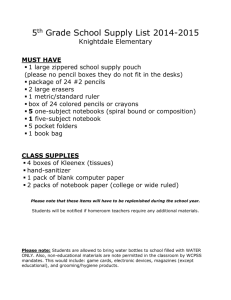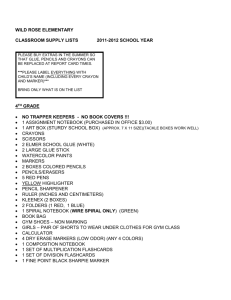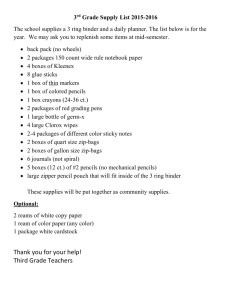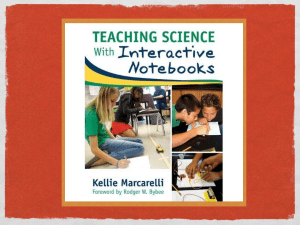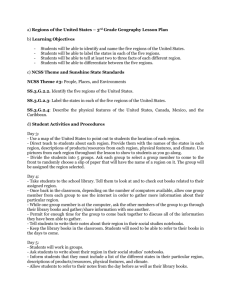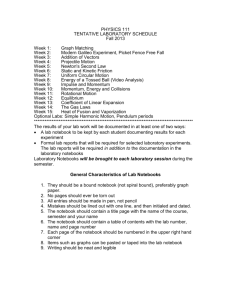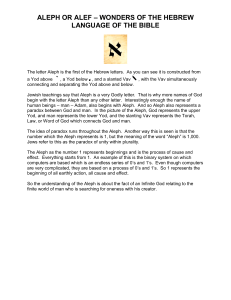File - Talya's Professional Portfolio
advertisement
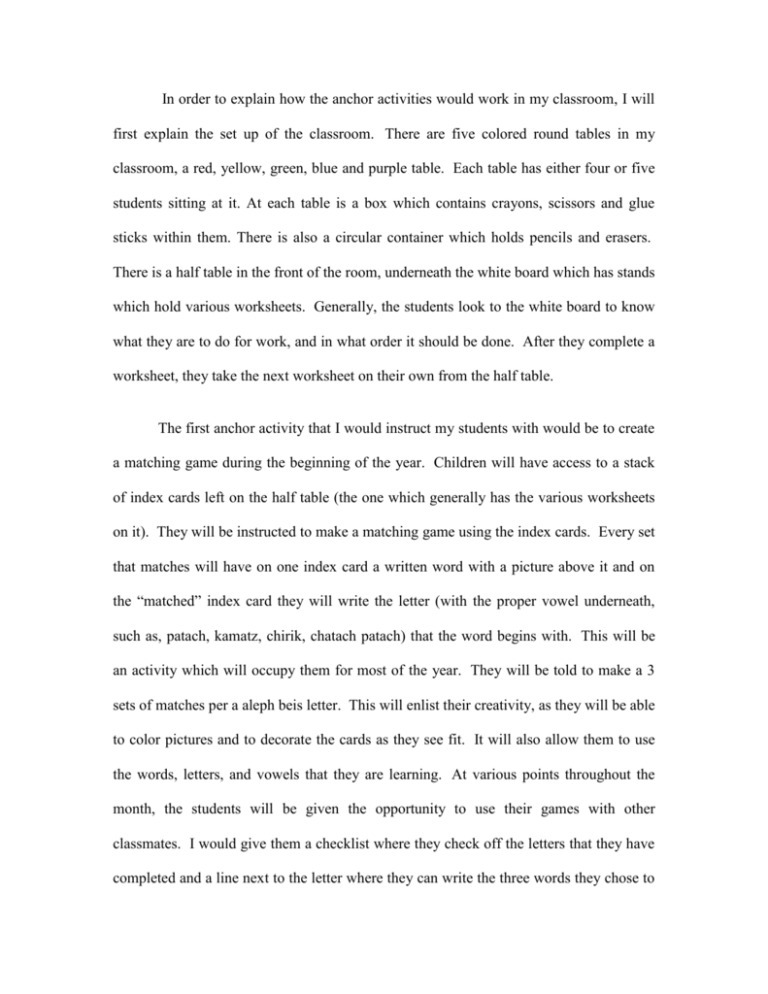
In order to explain how the anchor activities would work in my classroom, I will first explain the set up of the classroom. There are five colored round tables in my classroom, a red, yellow, green, blue and purple table. Each table has either four or five students sitting at it. At each table is a box which contains crayons, scissors and glue sticks within them. There is also a circular container which holds pencils and erasers. There is a half table in the front of the room, underneath the white board which has stands which hold various worksheets. Generally, the students look to the white board to know what they are to do for work, and in what order it should be done. After they complete a worksheet, they take the next worksheet on their own from the half table. The first anchor activity that I would instruct my students with would be to create a matching game during the beginning of the year. Children will have access to a stack of index cards left on the half table (the one which generally has the various worksheets on it). They will be instructed to make a matching game using the index cards. Every set that matches will have on one index card a written word with a picture above it and on the “matched” index card they will write the letter (with the proper vowel underneath, such as, patach, kamatz, chirik, chatach patach) that the word begins with. This will be an activity which will occupy them for most of the year. They will be told to make a 3 sets of matches per a aleph beis letter. This will enlist their creativity, as they will be able to color pictures and to decorate the cards as they see fit. It will also allow them to use the words, letters, and vowels that they are learning. At various points throughout the month, the students will be given the opportunity to use their games with other classmates. I would give them a checklist where they check off the letters that they have completed and a line next to the letter where they can write the three words they chose to use for that letter. This will also help me, as the teacher, to keep track of where all the students are up to in their index cards. Items needed: - Crayons (from their boxes on their table) - Pencils to write with (from their boxes on their tables) - Ariyot / Tel- Am workbooks to copy words if they aren’t sure how to spell something - Index cards - Zip lock bag to keep them in - Aleph Beis checklist As the students progressively continue to learn more letters and more vocabulary, they have a wider variety of skills, vocabulary and language. The second anchor activity which will be utilized in the unit of learning aleph beis is that each student will receive a notebook from the teacher. When a student is done with his or her work s/he will take out his/ her notebook and will work on writing sentences, and as the year progresses, stories, utilizing the vocabulary words that they have learned in that weeks unit. They will also be told that they should illustrate their sentences. Currently, when students are done with all of the possible work, they are given permission to play Hebrew games on the rug, or to create letters or words out of play dough. Once the teacher introduces this anchor activity, the students will be told to work in their notebooks, instead of playing. At various points throughout the year the students will be given the opportunity to present to the class sentences or stories from within their notebooks. Perhaps, it could even be arranged to have parents come to school at the end of the year so that the students could have an “authors day” presentation. The teacher will check the notebook once a week when the students have music or art so that she will know where each student is holding in their notebooks. Items needed: - Crayons (from their boxes on their table) - Pencils to write with (from their boxes on their tables) - Ariyot / Tel- Am workbooks to copy words if they aren’t sure how to spell something - Personal notebooks to write in
